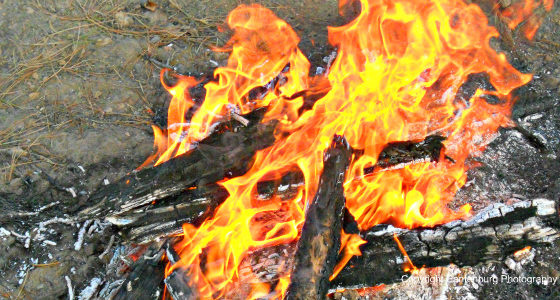Hardtack has been an emergency ration since time immemorial. Here’s a look at pilot bread, a modern day version of hardtack that is widely used in rural Alaska. And here’s why it should be considered for your survival gear.
by Leon Pantenburg
I’ve carried and eaten hardtack since my time in the Confederate infantry, and baking it is another history-related activity I enjoy. When I’m really going primitive, hunting with my flintlock rifle, I might pack hardtack, jerky and dehydrated corn for lunch.

Pilot bread is a form of modern hardtack. Consider it as an addition to your storage foods.
But if you’d rather buy a similar hard cracker product for long term storage, take a look at pilot bread. It’s widely available and a good staple to have on hand. It’s sorta tasty, durable, and has a long shelf life.
If I had to describe pilot bread, I’d call it a salt-less saltine, but with a tougher texture. While the bread is hard, it is easily bitten off, and the texture is much softer than the traditional recipe hardtack I make. Pilot bread also has fewer crumbs than a standard saltine. A nice feature is the durability – pilot bread with peanut butter and/or fruit jam stands up well to travel in a daypack.
Pilot bread is a common storage food item in Hawaii, and Alaska and The Diamond Bakery “Saloon Pilot” cracker is available in many stores. Sailor Boy brand Pilot Bread is well-known in the Northwest United States and Alaska, and I got mine at the local Food 4 Less.
It is “a very inspirational food” in Alaska, according to the Sailor Boy Facebook page. Alaskans are among the last to eat hardtack as a significant part of their normal diet. Interbake Foods of Richmond, Virginia, produces much of the commercially available hardtack under the “Sailor Boy” label—98 percent of its production goes to Alaskans.

Hardtack has been a standard military ration for several hundred years.
Originally imported as a food product that could handle rigorous transportation throughout Alaska, pilot bread has become a favored food even as other, less robust foods have become available. Alaskan law requires all light aircraft to carry “survival gear,” including food.
The blue-and-white Sailor Boy Pilot Bread boxes are common at Alaskan airstrips, in cabins, and virtually every village. Whether it’s topped with salmon spread, seal oil or old-school Crisco and sugar, chances are if you’ve ever lived in rural Alaska you’re familiar with that long, rectangular, navy blue box. The Alaska Dispatch claims pilot bread is soul food for rural Alaskans – mothers give it to their babies to teeth on, village grocery stores, no matter how sparse, carry it on their shelves, and seldom does a hunting party venture out in the country, or a family head to fish camp, without a supply stowed away in someone’s bag.
Lots of people have their favorite ways to enjoy them: topped with cheese or Spam or spread with peanut butter and jam or honey. You can also spread them with ground meat, cheese and tomato sauce and make pizzas. some people even know how to make “pizzas” with them.
While I use Pilot Bread frequently, I also bake hardtack for backcountry trips and the bread’s conversational value around the campfire. Here is a very traditional hardtack recipe from the Civil War. When done, this hardtack has the consistency of a fired brick, and lives up to the nickname of “teeth dullers.”
Army Hardtack Recipe
-
- 4 cups flour (preferably whole wheat)
- 4 teaspoons salt
- Water (about 2 cups)
- Pre-heat oven to 375° F
- Makes about 10 pieces
After cutting the squares, press a pattern of four rows of four holes into each square, using a nail or other such object. Do not punch through the dough. The appearance you want is similar to that of a modern saltine cracker. Turn each square over and do the same thing to the other side.
Place the squares on an ungreased cookie sheet in the oven and bake for 30 minutes. Turn each piece over and bake for another 30 minutes. The crackers should be slightly brown on both sides.
The fresh crackers are easily broken, but as they dry, they harden and assume the traditional texture.
Please click here to check out and subscribe to the SurvivalCommonSense.com YouTube channel – thanks!





